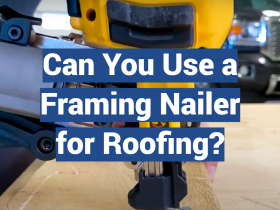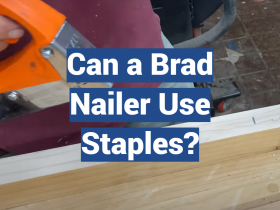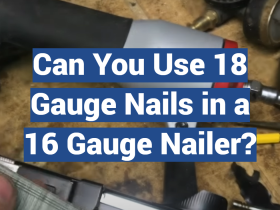A brad nailer is irreplaceable for large volumes of work, it does not bend nails and spoil the surface. The invention of this tool made the tedious and long work of hammering nails a real pleasure. How to work with this innovative tool?
It is enough just to bring the barrel of the pistol to the surface and pull the trigger, and the nail enters the material up to the head. This way up to three fasteners can be supplied per second. When working by hand, such performance is not even a dream.
What is a brad nailer
A brad nailer is a very useful tool and is widely used in construction and renovation work. The device is especially popular in professional circles, but recently it has been actively mastered by home craftsmen.
The nailer is an automatic hammer that drives nails without impact using human muscle strength. The design of the pistol is quite simple and includes a solid body, a comfortable grip, nail magazine, trigger, and a working piston. The speed of the shots depends on the nailer model and varies from 1 to 3 cycles per second.
The tools are actively used in the installation of roofing materials, including tiles and roll-sheet coverings, for fixing insulation and communications, as well as for assembling door frames and furniture and the construction of fences. The main advantages of nailers with automatic nail feed over classic hand hammers are high speed of work and no risk of injury.
Types
There are 2 types of brad nailers available on the market. They differ according to the source of energy that serves as the main driving force of the working piston. The electrical and pneumatic types are both common for home use.
Electrical brad nailers
For home use, an electric nailer is usually sufficient. It is a simple and lightweight (both in weight and in operation) tool of small size, which is powered by electricity or battery. This tool acts as a stapler and is designed to work with staples and small nails. The main operating mechanism is the spring, which, due to the compression energy, exerts a powerful effect on the working piston.
The obvious advantages of this type are low price, compactness, safety, and ease of use. It can boast low vibration and the absence of harmful exhaust. The main disadvantage is the inability to work with hard materials and without electricity. The volatility of the tool, low moisture resistance, weak shots can be added to its minuses.
For all electrical appliances, there is a maximum nail size that is limited to a length of 65 mm.
Tools of this type are much more popular than their network counterparts, due to their complete mobility and high working qualities.
Pneumatic brad nailers
If you need a more productive and “strong” tool, pay attention to pneumatic guns. They allow you to work with staples and nails with a diameter of up to 5 mm and a length of up to 22 cm. Among the obvious advantages, one can also note a high rate of fire, low recoil, and an impressive power – up to 100 J. The weight of a nailer rarely reaches 3 kg.
However, the pneumatic brad nailer also has tangible drawbacks. First of all, it requires a compressor that will supply compressed air. Typically 4-9 bar is sufficient for medium-capacity models. Powerful tools demand more – between 18 and 30 bar.
The tool is connected to the compressor by a hose that literally binds the working person, limiting his mobility. The main component of the pistol is a pneumatic cylinder, which contains compressed nitrogen. A fully charged battery lasts for about 500 shots.
They require a compressor installation, which is purchased separately and is not included in the basic package of the brad nailer. The main disadvantage of compressors is considered the impossibility of their operation in places where there is no electricity. However, some manufacturers took this nuance into account and began producing compressors equipped with batteries.
A full battery charge is enough for half an hour of continuous operation of the compressor unit, which allows you to work away from the power source. The battery is usually included with the nailer along with the charger. The wide range of brad nailers facilitates the choice greatly and allows you to purchase a model of the required power and acceptable cost.
A guide to using a pneumatic brad nailer
Step 1
Get the appropriate hose adaptor for a pneumatic brad nailer. Remember to buy some Teflon tape and a special oily lubricant.
Step 2
Insulate the connection of the hose with the device with the Teflon tape. Tighten it with a wrench to prevent any air leaks.
Step 3
Lubricate the device to guarantee its long and reliable functioning.
Step 4
Perform the loading of the tool with a certain number of nails.
Step 5
Connect the air compressor to the nailer with the hose. The connections must be tight. If not, use a wrench again to reach the target.
Step 6
Test the tool and perform the task.
Safety recommendations
- During work, you must strictly follow the instructions and do not allow persons under 18 to work.
- The eyes must be protected with glasses with side protection and in no case use ordinary sunglasses.
- Use only the size of nails recommended by the manufacturer of this model.
- When carrying out maintenance, the device must be disconnected from the network or compressor.
- It is forbidden to point a pistol towards a person or an animal.
What to look at when buying a tool
Having dealt with the types of nailers, here is a list of the main parameters that you have to pay attention to when choosing the tool.
- The first and the basic is productivity, more precisely, the number of shots fired by the tool per minute. For domestic use, 30 is enough.
- The second important point is the capacity of the drum. Powerful professional models produce up to 300 nails per charge. But half is enough for a simple user.
- The power of the blow is also very important. It is inversely proportional to performance. That is, the faster the device drives nails, the weaker it is. A nailer with maximum driving speed can only handle drywall, plywood, and thin boards.
Conclusion
A brad nailer is a handy tool to fire brad nails into wood, which are small finishing nails with narrow heads or even without any. No matter what type you have chosen, both are great for home use. All in all, the pneumatic tool is more powerful, while the electrical one is more portable and easy to use.




Leave a Reply